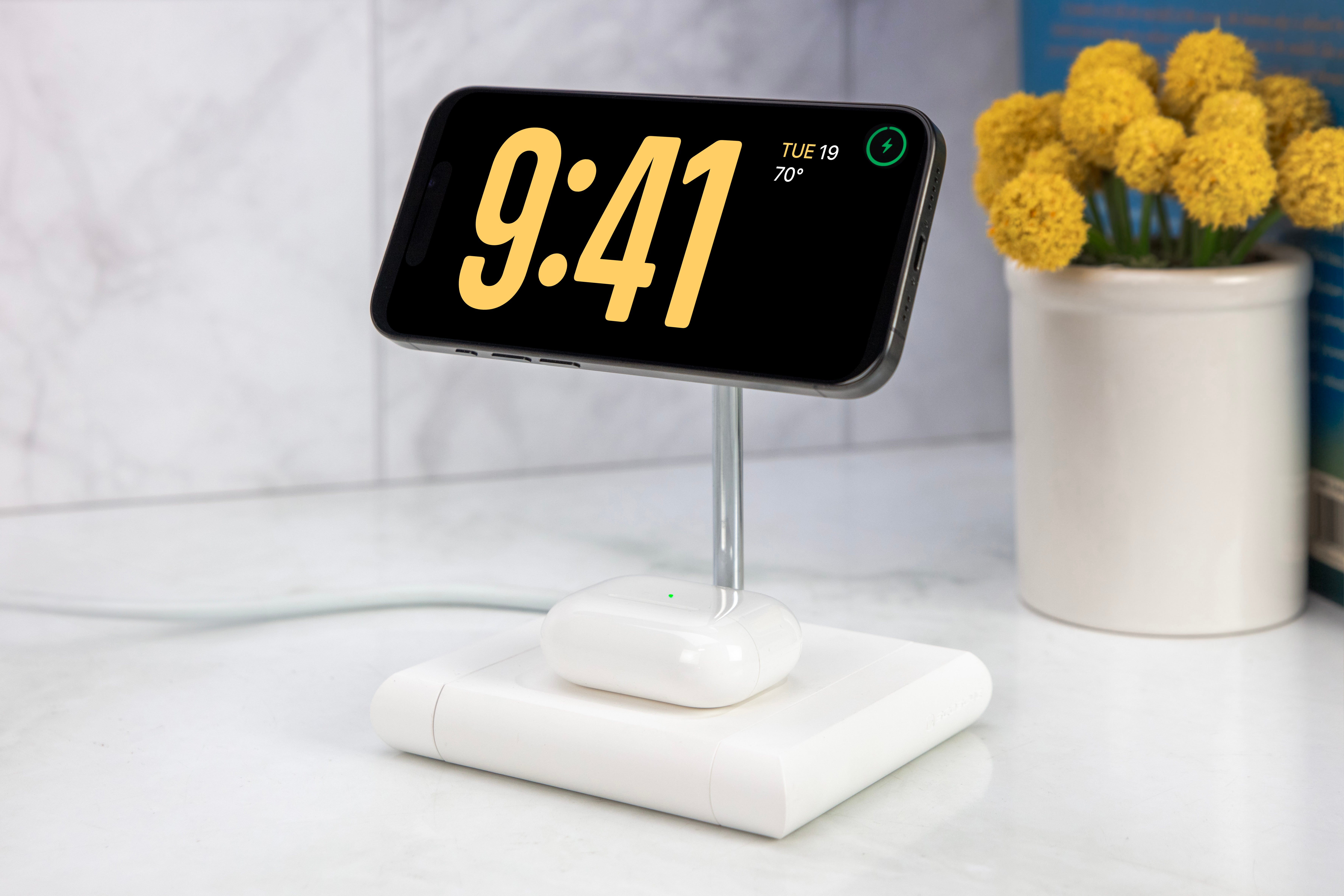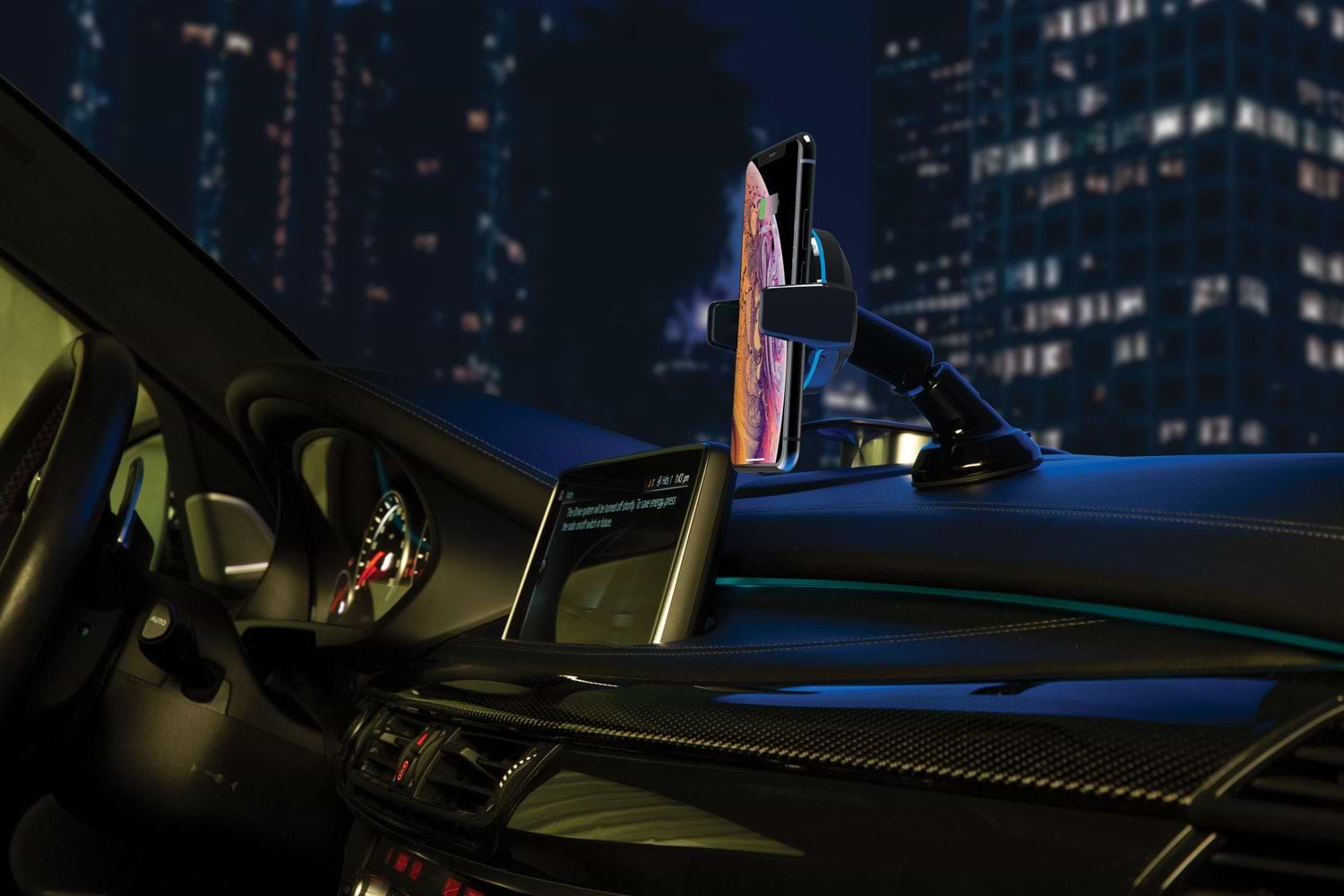iPhones with Wireless Charging Capabilities

The advancement of technology has brought numerous innovations to the world of smartphones. One of the most significant developments in recent years is the introduction of wireless charging capabilities in iPhones. This feature has transformed the way we charge our devices, offering convenience and eliminating the hassle of dealing with tangled cords.
In this article, we will explore the various aspects of iPhones with wireless charging capabilities, including the science behind the technology, the evolution of iPhone charging methods, current models supporting wireless charging, how to use wireless charging with your iPhone, and troubleshooting common issues.
Understanding Wireless Charging Technology
Wireless charging technology enables users to charge their iPhones without plugging them into a power source. Instead, the charging process is facilitated by electromagnetic fields. This technology relies on two main components: a wireless charging pad or mat and a compatible iPhone.
But how exactly does wireless charging work? Let's dive into the science behind this innovative technology.
The Science Behind Wireless Charging
Wireless charging is based on the principle of electromagnetic induction. When an electric current flows through a coil of wire, it generates a magnetic field around it. This magnetic field can induce an electric current in a separate coil of wire placed close to it. In the context of wireless charging, the charging pad contains a coil that generates the magnetic field, while the iPhone has a coil that receives the induced current, converting it into electrical energy to charge the device.
Imagine the wireless charging pad as a transmitter and the iPhone as a receiver. When you place your iPhone on the charging pad, the coil in the pad creates an alternating magnetic field. This magnetic field then interacts with the coil in the iPhone, inducing an electric current. This current is then converted back into electrical energy, charging the iPhone's battery.
It's fascinating to think about how this technology allows us to charge our devices without the need for physical connections. The ability to transfer energy wirelessly opens up a world of possibilities for convenience and flexibility.
Safety and Efficiency of Wireless Charging
Wireless charging technology is designed with safety in mind. It has built-in mechanisms to prevent overcharging, overheating, and short-circuiting. These safety features ensure that your iPhone remains protected while charging, giving you peace of mind.
Additionally, wireless charging is highly efficient, with a conversion rate of around 80% compared to traditional wired charging. This means that a significant majority of the electrical energy transferred to the iPhone is effectively used to charge the battery. With wireless charging, you can be confident that you're getting the most out of your charging experience.
Moreover, wireless charging eliminates the need for multiple charging cables and adapters. This not only reduces clutter but also contributes to a more sustainable environment by reducing electronic waste. It's a small step towards a greener future.
As technology continues to evolve, wireless charging is becoming more prevalent in our daily lives. From smartphones to smartwatches and even electric vehicles, the convenience and efficiency of wireless charging are revolutionizing the way we power our devices.
So the next time you place your iPhone on a wireless charging pad, take a moment to appreciate the science and engineering behind this remarkable technology. It's a testament to human innovation and our constant quest for a more connected and convenient world.
Evolution of iPhone Charging Methods
Since the introduction of the first iPhone, charging methods have evolved significantly. Let's take a closer look at the timeline of these advancements and the role of the Qi wireless charging standard.
From Wired to Wireless: A Timeline
Initially, iPhones were exclusively charged using a wired connection. Users had to connect their devices to a power source using the charging cable provided with the iPhone. This method, although effective, required users to carry around a charging cable and find a power outlet.
In 2017, Apple introduced wireless charging capabilities with the release of the iPhone 8, iPhone 8 Plus, and iPhone X. These models supported the Qi wireless charging standard, allowing users to charge their iPhones by simply placing them on a compatible charging pad. This breakthrough in charging technology brought convenience and ease of use to iPhone users.
Since then, Apple has continued to include wireless charging capabilities in newer iPhone models, making it an integral part of their product lineup. This shift towards wireless charging has transformed the way users interact with their iPhones, eliminating the need for cables and offering a clutter-free charging experience.
The Role of Qi Standard in iPhone Charging
The Qi wireless charging standard plays a crucial role in enabling wireless charging on iPhones. Qi is a universal charging standard developed by the Wireless Power Consortium (WPC). It ensures compatibility between different wireless charging devices and smartphones, allowing users to charge their iPhones using any Qi-compatible charging pad.
This standard has gained widespread adoption, making it easier for users to find a compatible charging solution. With the Qi standard, users no longer have to rely solely on Apple's proprietary charging accessories. They can choose from a variety of third-party charging pads and accessories that support the Qi standard, giving them more flexibility and options when it comes to charging their iPhones.
Furthermore, the Qi standard has also paved the way for advancements in charging technology. For example, newer charging pads now support faster charging speeds, allowing users to charge their iPhones more quickly than ever before. This is particularly useful for users who are always on the go and need to top up their device's battery in a short amount of time.
In addition, the Qi standard has also opened doors for innovation in other areas. For instance, some charging pads now come with additional features such as built-in cooling systems to prevent overheating during charging, ensuring the longevity of both the charging pad and the iPhone.
Overall, the evolution of iPhone charging methods, from wired to wireless, has revolutionized the way users power up their devices. With the introduction of the Qi wireless charging standard, charging has become more convenient, versatile, and efficient. As technology continues to advance, we can expect further improvements in iPhone charging methods, making it even more seamless and hassle-free for users.


Current iPhones with Wireless Charging
Several iPhone models currently support wireless charging.
Wireless charging has become a popular feature among iPhone users, providing a convenient and cable-free way to charge their devices. Gone are the days of fumbling with tangled cords and searching for available power outlets. With wireless charging, all you need is a compatible charging pad or mat, and you can simply place your iPhone on it to start charging.
Detailed Look at iPhone Models Supporting Wireless Charging
As of the time of writing this article, the iPhone models that support wireless charging include the iPhone 8, iPhone 8 Plus, iPhone X, iPhone XS, iPhone XS Max, iPhone XR, iPhone 11, iPhone 11 Pro, iPhone 11 Pro Max, iPhone SE (2nd generation), iPhone 12, iPhone 12 mini, iPhone 12 Pro, and iPhone 12 Pro Max.
Each of these iPhone models is equipped with a built-in wireless charging coil, which allows them to receive power wirelessly when placed on a compatible charging pad. This technology utilizes electromagnetic fields to transfer energy from the charging pad to the iPhone's battery, eliminating the need for physical connectors.
It's worth noting that while all these iPhone models support wireless charging, they may require a separate purchase of a wireless charging pad or mat. These accessories come in various shapes, sizes, and designs, allowing users to choose the one that best suits their needs and preferences.
Performance and Charging Speeds of Different Models
While all the aforementioned iPhone models support wireless charging, their performance and charging speeds may vary. Factors such as the battery capacity, charging technology, and the power output of the charging pad can influence the charging speed of each model.
Newer iPhone models, such as the iPhone 12 series, are equipped with advanced charging technologies that enable faster and more efficient wireless charging. These devices are designed to take advantage of higher power outputs, allowing for quicker charging times compared to their predecessors.
Additionally, the battery capacity of each iPhone model plays a role in determining the overall charging speed. iPhones with larger battery capacities may take slightly longer to charge wirelessly compared to those with smaller batteries. However, the difference in charging times is usually minimal and shouldn't be a significant concern for most users.
It's important to note that the charging pad or mat used also affects the charging speed. Higher-quality charging pads with greater power outputs can deliver more energy to the iPhone, resulting in faster charging times. Therefore, investing in a reliable and efficient charging pad can enhance the wireless charging experience.
In conclusion, wireless charging has become a standard feature in many iPhone models, providing users with a convenient and hassle-free way to charge their devices. With a wide range of iPhone models supporting wireless charging, users have the freedom to choose the device that best suits their needs and preferences. Whether it's the sleek and compact iPhone SE or the powerful and feature-packed iPhone 12 Pro Max, wireless charging is here to stay, revolutionizing the way we power our iPhones.
How to Use Wireless Charging with Your iPhone
Using wireless charging with your iPhone is straightforward.
Choosing the Right Wireless Charger
When selecting a wireless charger for your iPhone, it is essential to ensure compatibility with the Qi standard and the specific iPhone model you own. You can choose from a variety of wireless charger options, including charging pads, stands, and car mounts. It is also recommended to choose a charger from reputable brands to ensure safety and optimum performance.
Steps to Charge Your iPhone Wirelessly
To charge your iPhone wirelessly, follow these steps:
- Connect the charging pad or mat to a power source.
- Place your iPhone on the charging pad, ensuring proper alignment with the charging coil.
- Wait for the charging process to begin. Your iPhone may display a charging indicator or provide an audible notification.
- Leave your iPhone on the charging pad until it reaches the desired battery level.
- Once fully charged, remove your iPhone from the charging pad.
Troubleshooting Wireless Charging Issues
Although wireless charging is generally reliable, occasional issues may arise.
Common Problems and Solutions
If you encounter issues with wireless charging, consider the following solutions:
- Ensure the charging pad is connected to a power source and properly functioning.
- Remove any obstructions, such as cases or foreign objects, that may interfere with the charging process.
- Try repositioning your iPhone on the charging pad to establish a stable connection.
- Restart your iPhone to resolve any software-related issues that may be affecting wireless charging functionality.
When to Contact Apple Support
If you have followed the troubleshooting steps and are still experiencing issues with wireless charging, it is advisable to contact Apple Support for further assistance. They can provide personalized guidance and help resolve any underlying problems with your iPhone or charging accessories.
Conclusion
In conclusion, iPhones with wireless charging capabilities have revolutionized the way we charge our devices. The science behind wireless charging, the evolution of iPhone charging methods, current models supporting wireless charging, how to use wireless charging with your iPhone, and troubleshooting common issues have all been explored in this article. With its convenience and efficiency, wireless charging has become a popular feature among iPhone users, providing a seamless charging experience for devices that are an essential part of our daily lives.